Kenneth C. Davis's Blog, page 8
March 16, 2024
Don’t Know Much About® Mr. Madison
March 16 marks the anniversary of the birth in 1751 of America’s fourth President, James Madison, also known as “The Father of the Constitution.”
Like George Washington and Thomas Jefferson, his Virginia predecessors in the presidency, Madison embodied the “Great Contradiction”– that a nation “conceived in liberty” was also born in shackles.
READ MY ARTICLE “THE AMERICAN CONTRADICTION,” on teaching the history of American slavery in Social Education.
Small in stature and overshadowed by the more famous Washington and Jefferson, Madison is counted among of the greatest of the Founding Fathers for the breadth and influence of his contributions. Like many of the Founders, Madison had reservations about slavery as a contradiction to this ideals, but did little to end the institution. He hoped that slavery would end after the foreign trade was abolished and thought that enslaved African-Americans should be emancipated and returned to Africa.
The story of Paul Jennings, who was enslaved by Madison and wrote a memoir of working as a servant in the White House, is told in my book IN THE SHADOW OF LIBERTY.
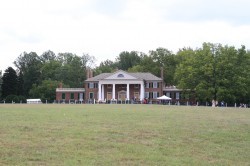
Montpelier, home of James Madison (Photo: Kenneth C. Davis, 2010)
James Madison was born on March 16, 1751 in Port Conway, Virginia. The son of a tobacco planter and somewhat sickly as a child, he went north to study at the College of New Jersey (now Princeton). There he came under the influence of the college President, John Witherspoon, a future signer of the Declaration of Independence, and made a friend of fellow student, Aaron Burr, son of the College’s founder.
Returning to Virginia, Madison became involved in patriot politics and became a close colleague of his neighbor Thomas Jefferson, serving as Jefferson’s adviser and confidant during the war years while Jefferson was Governor of Virginia.
In 1794, he married the widow Dolley Payne Todd, having been formally introduced by his college friend Aaron Burr.
A few Madison Highlights:
•Secured passage of the Virginia Act for Establishing Religious Freedom (1786), an act that is a cornerstone of religious freedom in America. As part of that effort, he wrote the influential Memorial and Remonstrance Against Religious Assessments. (I discuss the “Remonstrance” in my article “America’s True History of Religious Tolerance” in the October 2010 Smithsonian.)
•Was the moving force behind the Constitutional Convention and was one of the principal authors of the Constitution. Madison’s support of the electoral system is laid out in this essay by Yale professor Akhil Reed Amar “The Troubling Reason the Electoral College Exists.”
•With Alexander Hamilton and John Jay was one of the authors of The Federalist Papers (Resources from the Library of Congress), arguments in favor of the ratification of the Constitution
•Was principal author of the Bill of Rights, which he originally thought unnecessary
Following ratification of the Constitution, Madison was a member of the House of Representatives from Virginia and a powerful Congressional ally of George Washington.
•Drafted the first version of Washington’s Farewell Address
•Supervised the Louisiana Purchase as Thomas Jefferson’s Secretary of State
•Presided over the ill-prepared nation during the War of 1812, the “second war of independence”
I believe there are more instances of the abridgment of the freedom of the people by gradual and silent encroachments of those in power than by violent and sudden usurpations. –June 16, 1788

Madison’s grave at Montpelier (Author photo 2010)
Madison died on June 28, 1836 at Montpelier, at age 85. Enslaved servant Paul Jennings was at his bedside and later recalled in a memoir that Madison died, “as quietly as the snuff of a candle goes out.”
James Madison is buried at Montpelier.

LINKS:
The Library of Congress Resource Collection on James Madison.
Madison’s Major Papers and Inaugural Addresses can be found at the Avalon Project of the Yale Law School.
The post Don’t Know Much About® Mr. Madison first appeared on Don't Know Much.
March 15, 2024
Don’t Know Much About® Andrew Jackson
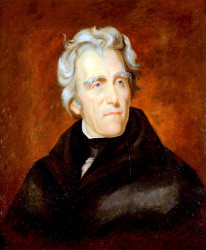
Imacon Color Scanner
(March 15, 2024: Revision of original post of March 15, 2014. Video created and directed by Colin Davis.)
Andrew Jackson, the seventh president of the United States, was born on March 15, 1767.
His birthplace was a cabin on the border of both South and North Carolina (the precise location is uncertain).
When this was last posted, he had fallen from favor and was going to be moved to the back side of the $20 in favor of Harriet Tubman. That decision was shelved by the previous administration and in 2021 was put back on track under the Biden administration.
In his day and ever since, Andrew Jackson provoked high emotions and sharp opinions. Thomas Jefferson once called him, “A dangerous man.”
His predecessor as president, John Quincy Adams, a bitter political rival, said Jackson was,
“A barbarian who could not even write a sentence of grammar and could hardly spell his own name.”
His place and reputation as an Indian fighter began with a somewhat overlooked fight against the Creek nation led by a half-Creek, half-Scot warrior named William Weatherford, or Red Eagle following an attack on an outpost known as Fort Mims north of Mobile, Alabama.
The video above (created in 2014) offers a quick overview of Weatherford’s war with Jackson that ultimately led the demise of the Creek nation.Like Pearl Harbor or 9/11, it was an event that shocked the nation. Soon, Red Eagle and his Creek warriors were at war with Andrew Jackson, the Nashville lawyer turned politician, who had no love for the British or Native Americans.
On March 27, 1814, Jackson’s troops defeated Red Eagle and his Creek warriors, killing more than 800 Natives–women, children, and the elderly as well as warriors. Jackson’s soldiers cut off the noses of the dead to tally their numbers. Other soldiers cut off strips of skin to make reins for their horses. (A Nation Rising, page 66-68)
On August 9, 1814, Major General Andrew Jackson signed the Treaty of Fort Jackson ending the Creek War. The agreement provided for the surrender of twenty-three million acres of Creek land to the United States. This vast territory encompassed more than half of present-day Alabama and part of southern Georgia.
Resources from Library of Congress.
The complete story of the Red Creek War is told in my book A Nation Rising.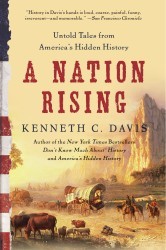
Andrew Jackson died on June 8, 1845. He was surrounded by many of the household servants he had enslaved. He told them:
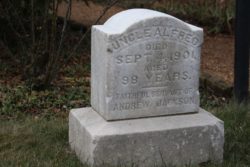
Tombstone of Alfred Jackson, enslaved servant of Andrew Jackson. (Author photo © 2010)
“I want all to prepare to meet me in heaven….Christ has no respect to color.”
The story of one of those people, Alfred Jackson, is told in my recent book, In the Shadow of Liberty. Alfred Jackson is buried in the garden at the Hermitage, near Andrew Jackson’s gravesite.

The post Don’t Know Much About® Andrew Jackson first appeared on Don't Know Much.
March 14, 2024
The World in Books-Coming in October 2024
I am very excited to announce the publication of my latest work:
THE WORLD IN BOOKS:
52 Works of Great Short Nonfiction
Coming from Scribner Books on October 8, 2024. Read more and preorder copies here.
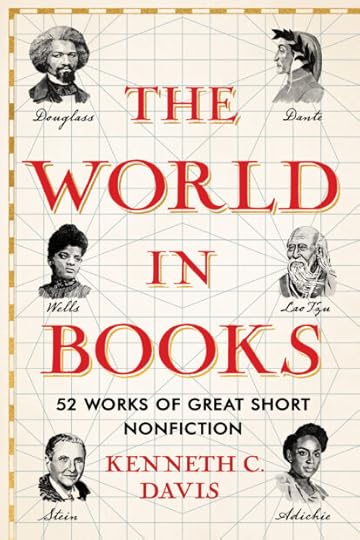
Among the 52 titles I have included are The Epic of Gilgamesh, Genesis, the poetry of Sappho, Meditations by Marcus Aurelius, and such profoundly influential writers as Frederick Douglass, Henry David Thoreau, Virginia Woolf, Helen Keller, James Baldwin, Susan Sontag, and Timothy Snyder.
The essential message of this book is that books matter–now more than ever. We must continue to educate ourselves. I believe that Open Books Open Minds.
I look forward to talking about this book in the coming months and sharing my fundamental belief that books can change us and the world.
In the meantime, please read and enjoy Great Short Books: A Year of Reading–Briefly
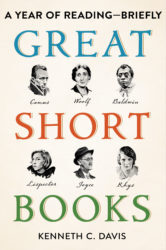
The post The World in Books-Coming in October 2024 first appeared on Don't Know Much.
GREAT SHORT BOOKS: A Year of Reading–Briefly
NOW IN PAPERBACK
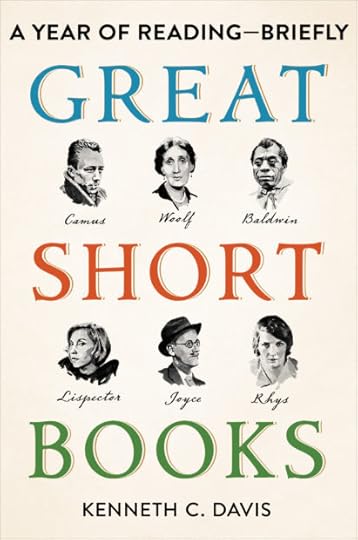
GREAT SHORT BOOKS:
A YEAR OF READING — BRIEFLY
Scribner/Simon & Schuster and Simon Audio (Unabridged audio download)
“An exciting guide to all that the world of fiction has to offer in 58 short novels — from ‘The Great Gatsby’ and ‘Lord of the Flies’ to the contemporary fiction of Colson Whitehead and Leïla Slimani — that, ‘like a first date,’ offer pleasure and excitement without commitment.” New York Times Book Review
Booklist “Editors’ Choice Adult Books 2022″
“…The most exceptional of the best books of 2022 reviewed in Booklist…”
“Delightfully accessible, Great Short Books: A Year of Reading–Briefly presents 58 fact-filled reviews of short books, a smorgasbord of titles sure to entice readers.” –Cheryl McKeon, Shelf Awareness
“I consider Davis’ ‘Great Short Books’ a gift to readers, a true treasure trove of literary recommendations.” —Sue Gilmore, SFGate
“Anyone who’s eternally time-strapped will treasure Kenneth C. Davis’ Great Short Books. This nifty volume highlights 58 works of fiction chosen by Davis for their size (small) and impact (enormous). Each brisk read weighs in at around 200 pages but has the oomph of an epic.” —Bookpage Full Review
“An entertaining journey with a fun, knowledgeable guide…. “ Kirkus Reviews
“A must-purchase for public and school libraries.” ALA Booklist
FIRST TRADE REVIEWS FROM KIRKUS, PUBLISHERS WEEKLY, BOOKLIST
“Davis feels that novels of 200 pages or less often don’t get the recognition they deserve, and this delightful book is the remedy…A must-purchase for public and school libraries.” *Starred Booklist review
“An entertaining journey with a fun, knowledgeable guide…. His love of books and reading shines through. From 1759 (Candide) to 2019 (The Nickel Boys), he’s got you covered.” –Kirkus Reviews
Full KIRKUS review here
“Davis’s conversational tone makes him a great guide to these literary aperitifs. This is sure to leave book lovers with something new to add to their lists.” FULL PUBLISHERS WEEKLY REVIEW here
During the lock-down, I swapped doom-scrolling for the insight and inspiration that come from reading great fiction. Inspired by Boccaccio’s “The Decameron” and its brief tales told during a pandemic, I read 58 great short novels –not as an escape but an antidote.
“A short novel is like a great first date. It can be extremely pleasant, even exciting, and memorable. Ideally, you leave wanting more. It can lead to greater possibilities. But there is no long-term commitment.”
–From “Notes of a Common Reader,” the Introduction to Great Short Books
Read “The Antidote to Everything,” an excerpt from the Introduction published on Lit Hub
The result is a compendium that goes from “Candide” to Colson Whitehead, and Edith Wharton to Leïla Slimani. And yes, Maus and many other Banned Books and Writers.

What “A Year of Reading–Briefly” looks like

Voltaire in Great Short Books
Art © Sam Kerr

Edith Wharton in Great Short Books
Art © Sam Kerr
Advance Praise for Great Short Books: A Year of Reading—Briefly
“GREAT SHORT BOOKS is a fascinating, thoughtful, and inspiring guide to a marvelous form of literature: the short novel. You can dip into this book anywhere you like, but I found myself reading it cover-to-cover, delighting in discovering new works while also revisiting many of my favorites. GREAT SHORT BOOKS is itself a great book—for those who are over-scheduled but want to expand their reading and for those who will simply delight in spending time with a passionate fellow reader who on every page reminds us why we need and love to read.”
–Will Schwalbe, New York Times bestselling author of THE END OF YOUR LIFE BOOK CLUB
“This is the book that you didn’t know you really needed. I began digging into this book as soon as I got it, and it was such a delight to read beautiful prose, just a sip at a time, with Kenneth Davis’ notes to give me context and help me more fully appreciate the stories. Keep this book near your bed or on your coffee table. It will be read and loved.”
–Celeste Headlee, journalist and author of WE NEED TO TALK and SPEAKING OF RACE

Recording audio book of Great Short Books (Sept. 2022) Photo by Katherine Cook
From hard-boiled fiction to magical realism, the 18th century to the present day, Great Short Books spans genres, cultures, countries, and time to present a diverse selection of acclaimed and canonical novels—plus a few bestsellers. Like browsing in your favorite bookstore, this eclectic compendium is a fun and practical book for any passionate reader hoping to broaden their collection— or anyone who is looking for an entertaining, effortless reentry into reading.
Listen to a sample of the audio book of Great Short Books

And Indie booksellers weigh in:
“Need something grand, something classic, uh…. something short to read, but don’t know where to start? Check out Kenneth Davis’s guide to Great Short Books and you’ll soon find just the right tale to delight your literary palate. For each suggestion, Davis gives us first lines, a plot summary, an author’s bio, a reason for reading it, and, finally, what you should read next from the author’s canon. Pick up a copy… you’ll be glad you did. You’re welcome!”—Linda Bond, Auntie’s Bookstore (Spokane, WA)
“Kenneth Davis has presented the perfect solution for too many books, not enough time—a collection of exceptional short books perfect for reading in a society seemingly without any free time. Many of the books may be familiar by name, some are obscure, some even forgotten, but all belong in the canon of superb literature. He teases with a brief synopsis and explains why each book deserves attention. An absolutely intriguing bonus is a short biographical sketch of each author, many of whom had fascinating but traumatic lives. It is the perfect book to provide comfort literature for busy readers.”—Bill Cusumano, Square Books (Oxford, Miss.)
More early reviews from readers at NetGalley.com
“GREAT SHORT BOOKS is a wonderful, breezy but deep look at the outstanding short books of the last 150 years. Kenneth C. Davis is a genius at summarizing each book and making the reader want to read said book post haste. This is a book I didn’t know the world needed but the world did.” –Tom O., reviewer
“…an incredibly valuable tool for book clubs and readers everywhere! Some authors/titles are well-known and others will be new discoveries….HIGHLY RECOMMENDED for any book group looking to find new titles or any reader who wants to know what to read next.” –Ann H. reviewer
“I found over a dozen new authors or titles I want to now read that were included in his main list, and the Further Reading at the end of each chapter and at the end of the volume itself.
As others have suggested, this is a great tool for Book Clubs!
Not Lit Crit, it is mostly focused on necessary, just-the-facts-mam information on one person’s reading of short books over a year. Well worth a read, and great for browsing!” –Stephen B., Librarian
“What better way to introduce new readers to more than 50 ‘short’ books. This handy book is full of non-spoiler descriptions and cultural context that situate these stories within our world.” –Kelsey W., librarian
S0urce: Great Short Books via NetGalley
I can’t wait to start talking about this book with readers everywhere.
Teachers, Librarians, Book Clubs and Other Learning Communities:
Invite me for a visit to your school, classroom, library, historical group, book club or conference.
The post GREAT SHORT BOOKS: A Year of Reading–Briefly first appeared on Don't Know Much.
February 22, 2024
What Do We Do About George?

Portrait of George Washington by Gilbert Stuart (Source: Clark Institute Williamstown, Mass.)
[Originally posted July 2, 2020; revised February 22, 2024]
Today is actually George Washington’s Birthday. Maybe you thought you celebrated last Monday (not President’s Day). Seeing as the holiday falls in February –Black History Month– it is a good time to bring these two crucial pieces of history together.
There is no question that Washington’s accomplishments were central to the foundation of the Republic. His command during the Revolution. His role at the Constitutional Convention, where he presided. His two terms as president, in which he established many presidential precedents and then stepped aside. For these achievements, I described him as one of America’s greatest presidents. He was, as one biographer described him, the “Indispensable Man.”
But like many of the Founders, the “Father of Our Country” enslaved people. Inheriting ten people from his father at age eleven, Washington held more than three hundred men, women, and children in bondage at the time of his death in 1799. While one man was freed in Washington’s will, the others had to wait for Martha Washington to die. And roughly half of those people remained enslaved, parceled out among the Custis family, as part of the estate of Martha’s first husband.
In other words, George Washington was an enslaver from childhood to grave. And we have the receipts.
He once raffled off whole families in lots, including small children separated from parents. He later purchased four children at an estate sale, sending two dark-skinned boys to do fieldwork while two “mulatto” boys became house servants. Frank Lee became Mount Vernon’s butler and his brother Billy Lee served as Washington’s valet, his “loyal manservant,” for some thirty years.

The last remaining set of Washington’s dentures (Courtesy: Mount Vernon Ladies Association)
Washington’s own journal records that he purchased teeth pulled from the mouths of enslaved people, presumably to be fitted into his dentures. In exchange for a grocery list of rum, molasses, fruits, and sweetmeats, he once shipped off a man named Tom, a repeat runaway, and at least two other men to the cane fields of the West Indies.
And then there is the heroic Washington’s actions at Yorktown. After his signal victory over the British in 1781, General Washington wasted no time in recovering Esther, Lucy, Sambo Andersen, and fourteen others who had escaped Mount Vernon when offered the chance. They were among thousands of enslaved people who had fled to the British in hopes of emancipation. While Washington won America’s liberty, they lost theirs.
Did this inconsistency trouble Washington? The contradiction between his devotion to freedom while enslaving people did seem to prick his conscience. In 1786, he confided to fellow Founder Robert Morris, “there is not a man living who wishes more sincerely than I do to see a plan adopted for the abolition of it [slavery].”
But he did precious little to make it happen, either while presiding over the convention that cemented slavery in the Constitution, or as first president. After Philadelphia became the nation’s capital in 1790, President Washington shuttled enslaved servants in and out of the city to evade a Pennsylvania law that called for the emancipation of enslaved males residing in the state for more than six months. In 1793, he signed the Fugitive Slave Act, making assistance to runaways a federal offense.
When Ona Judge, Martha Washington’s enslaved maid, learned she would be given away as a wedding gift, she escaped from the home of the president in 1796. He advertised a ten-dollar reward for her return and spent the next three years trying to track down and recover a woman who had risked all for freedom.
For more than two centuries, these contradictions were given little weight by Washington’s admirers. The little boy who couldn’t tell a lie was immortalized as “First in the hearts of his countrymen.” The enslavement of human beings, especially by one of America’s most admired presidents, remained the dirty secret long concealed by textbooks and popular culture.
But a stunning moment of correction has arrived. It begs the questions:
Will George Washington’s picture be removed from the currency?
Will protestors project the images of African-American heroes onto Washington’s stern visage carved on Mt. Rushmore, as Harriet Tubman’s face now adorns Robert E. Lee’s statue in Richmond?

Washington Monument (Courtesy National Parks Service https://www.nps.gov/wamo/learn/histor...)
What about the Washington Monument?
We are now in a teachable moment. What we do is limited only by our creativity and the courage to be honest. We won’t take a chisel to the Washington Monument or spray paint it with graffiti. But we should teach students and all Americans that Washington was a flawed man who committed a crime against humanity while also building the nation. This was the “gross injustice and cruelty” that Frederick Douglass famously called out in his 1852 speech, “What to the Slave is the Fourth of July?”
Remaining silent on that injustice and cruelty is no longer an option. Because this is one of those “self-evident” truths. The United States was “conceived in liberty,” but born in shackles. We can no longer honor Washington’s indispensable achievements without recognizing his original sin.
What better occasion than Washington’s Birthday to do that.


The post What Do We Do About George? first appeared on Don't Know Much.
February 14, 2024
GREAT SHORT BOOKS: A Year of Reading–Briefly
NOW IN PAPERBACK

GREAT SHORT BOOKS:
A YEAR OF READING — BRIEFLY
Scribner/Simon & Schuster and Simon Audio (Unabridged audio download)
“An exciting guide to all that the world of fiction has to offer in 58 short novels — from ‘The Great Gatsby’ and ‘Lord of the Flies’ to the contemporary fiction of Colson Whitehead and Leïla Slimani — that, ‘like a first date,’ offer pleasure and excitement without commitment.” New York Times Book Review
Booklist “Editors’ Choice Adult Books 2022″
“…The most exceptional of the best books of 2022 reviewed in Booklist…”
“Delightfully accessible, Great Short Books: A Year of Reading–Briefly presents 58 fact-filled reviews of short books, a smorgasbord of titles sure to entice readers.” –Cheryl McKeon, Shelf Awareness
“I consider Davis’ ‘Great Short Books’ a gift to readers, a true treasure trove of literary recommendations.” —Sue Gilmore, SFGate
“Anyone who’s eternally time-strapped will treasure Kenneth C. Davis’ Great Short Books. This nifty volume highlights 58 works of fiction chosen by Davis for their size (small) and impact (enormous). Each brisk read weighs in at around 200 pages but has the oomph of an epic.” —Bookpage Full Review
“An entertaining journey with a fun, knowledgeable guide…. “ Kirkus Reviews
“A must-purchase for public and school libraries.” ALA Booklist
FIRST TRADE REVIEWS FROM KIRKUS, PUBLISHERS WEEKLY, BOOKLIST
“Davis feels that novels of 200 pages or less often don’t get the recognition they deserve, and this delightful book is the remedy…A must-purchase for public and school libraries.” *Starred Booklist review
“An entertaining journey with a fun, knowledgeable guide…. His love of books and reading shines through. From 1759 (Candide) to 2019 (The Nickel Boys), he’s got you covered.” –Kirkus Reviews
Full KIRKUS review here
“Davis’s conversational tone makes him a great guide to these literary aperitifs. This is sure to leave book lovers with something new to add to their lists.” FULL PUBLISHERS WEEKLY REVIEW here
During the lock-down, I swapped doom-scrolling for the insight and inspiration that come from reading great fiction. Inspired by Boccaccio’s “The Decameron” and its brief tales told during a pandemic, I read 58 great short novels –not as an escape but an antidote.
“A short novel is like a great first date. It can be extremely pleasant, even exciting, and memorable. Ideally, you leave wanting more. It can lead to greater possibilities. But there is no long-term commitment.”
–From “Notes of a Common Reader,” the Introduction to Great Short Books
Read “The Antidote to Everything,” an excerpt from the Introduction published on Lit Hub
The result is a compendium that goes from “Candide” to Colson Whitehead, and Edith Wharton to Leïla Slimani. And yes, Maus and many other Banned Books and Writers.

What “A Year of Reading–Briefly” looks like

Voltaire in Great Short Books
Art © Sam Kerr

Edith Wharton in Great Short Books
Art © Sam Kerr
Advance Praise for Great Short Books: A Year of Reading—Briefly
“GREAT SHORT BOOKS is a fascinating, thoughtful, and inspiring guide to a marvelous form of literature: the short novel. You can dip into this book anywhere you like, but I found myself reading it cover-to-cover, delighting in discovering new works while also revisiting many of my favorites. GREAT SHORT BOOKS is itself a great book—for those who are over-scheduled but want to expand their reading and for those who will simply delight in spending time with a passionate fellow reader who on every page reminds us why we need and love to read.”
–Will Schwalbe, New York Times bestselling author of THE END OF YOUR LIFE BOOK CLUB
“This is the book that you didn’t know you really needed. I began digging into this book as soon as I got it, and it was such a delight to read beautiful prose, just a sip at a time, with Kenneth Davis’ notes to give me context and help me more fully appreciate the stories. Keep this book near your bed or on your coffee table. It will be read and loved.”
–Celeste Headlee, journalist and author of WE NEED TO TALK and SPEAKING OF RACE

Recording audio book of Great Short Books (Sept. 2022) Photo by Katherine Cook
From hard-boiled fiction to magical realism, the 18th century to the present day, Great Short Books spans genres, cultures, countries, and time to present a diverse selection of acclaimed and canonical novels—plus a few bestsellers. Like browsing in your favorite bookstore, this eclectic compendium is a fun and practical book for any passionate reader hoping to broaden their collection— or anyone who is looking for an entertaining, effortless reentry into reading.
Listen to a sample of the audio book of Great Short Books

And Indie booksellers weigh in:
“Need something grand, something classic, uh…. something short to read, but don’t know where to start? Check out Kenneth Davis’s guide to Great Short Books and you’ll soon find just the right tale to delight your literary palate. For each suggestion, Davis gives us first lines, a plot summary, an author’s bio, a reason for reading it, and, finally, what you should read next from the author’s canon. Pick up a copy… you’ll be glad you did. You’re welcome!”—Linda Bond, Auntie’s Bookstore (Spokane, WA)
“Kenneth Davis has presented the perfect solution for too many books, not enough time—a collection of exceptional short books perfect for reading in a society seemingly without any free time. Many of the books may be familiar by name, some are obscure, some even forgotten, but all belong in the canon of superb literature. He teases with a brief synopsis and explains why each book deserves attention. An absolutely intriguing bonus is a short biographical sketch of each author, many of whom had fascinating but traumatic lives. It is the perfect book to provide comfort literature for busy readers.”—Bill Cusumano, Square Books (Oxford, Miss.)
More early reviews from readers at NetGalley.com
“GREAT SHORT BOOKS is a wonderful, breezy but deep look at the outstanding short books of the last 150 years. Kenneth C. Davis is a genius at summarizing each book and making the reader want to read said book post haste. This is a book I didn’t know the world needed but the world did.” –Tom O., reviewer
“…an incredibly valuable tool for book clubs and readers everywhere! Some authors/titles are well-known and others will be new discoveries….HIGHLY RECOMMENDED for any book group looking to find new titles or any reader who wants to know what to read next.” –Ann H. reviewer
“I found over a dozen new authors or titles I want to now read that were included in his main list, and the Further Reading at the end of each chapter and at the end of the volume itself.
As others have suggested, this is a great tool for Book Clubs!
Not Lit Crit, it is mostly focused on necessary, just-the-facts-mam information on one person’s reading of short books over a year. Well worth a read, and great for browsing!” –Stephen B., Librarian
“What better way to introduce new readers to more than 50 ‘short’ books. This handy book is full of non-spoiler descriptions and cultural context that situate these stories within our world.” –Kelsey W., librarian
S0urce: Great Short Books via NetGalley
I can’t wait to start talking about this book with readers everywhere.
Teachers, Librarians, Book Clubs and Other Learning Communities:
Invite me for a visit to your school, classroom, library, historical group, book club or conference.
The post GREAT SHORT BOOKS: A Year of Reading–Briefly first appeared on Don't Know Much.
February 13, 2024
It is NOT Presidents Day. Or President’s Day. Or Even Presidents’ Day.
(Earlier post updated 2/13/2024)
We are past Abraham Lincoln’s actual birthday–February 12– and we are heading towards a three-day holiday.
So What Day Is it After All?
Okay. We all do it. It is printed on calendars and posted in bank windows. We mistakenly call the third Monday in February Presidents Day, in part because of all those commercials in which George Washington swings his legendary ax and “Rail-splitter” Abe Lincoln hoists his ax to chop down prices on everything from mattresses and linens to SUVs.
But, this February holiday is officially still George Washington’s Birthday.
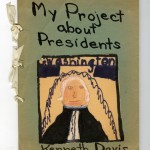
I wrote My Project About Presidents in 3rd Grade when I was 9. Even then I was asking questions about history and presidents
But Washington’s Birthday has become widely known as Presidents Day (or President’s Day, or Presidents’ Day). The popular usage and confusion resulted from the merging of what had been two widely celebrated Presidential birthdays in February —Lincoln’s on February 12th, which was never a federal holiday– and Washington’s on February 22, which was.
Created under the Uniform Holiday Act of 1968, which gave us three-day weekend Monday holidays, the federal holiday on the third Monday in February is technically still Washington’s Birthday. But here’s the rub: the holiday can never land on Washington’s true birthday because the latest date it can fall is February 21, as it did in 2011.
But we cannot discuss Washington, Lincoln, the presidency, or much of United States history without discussing the role that slavery played in the foundation and establishment of the republic.
READ MY ARTICLE in Social Education: “The American Contradiction: Conceived in Liberty, Born in Shackles”
George Washington’s role as an enslaver is fully explored in my book IN THE SHADOW OF LIBERTY: The Hidden History of Slavery, Four Presidents, and Five Black Lives. 
There is a wealth of information about the First President at his home Mount Vernon.

Washington’s Tomb — Mt. Vernon (Photo credit Kenneth C. Davis 2010)
And read More About the creation of the Presidency, Washington, his life and administration in DON’T KNOW MUCH ABOUT® THE AMERICAN PRESIDENTS. Washington’s role in the American Revolution is highlighted Chapter One of THE HIDDEN HISTORY OF AMERICA AT WAR.

The Hidden History of America At War (paperback)

Don’t Know Much About® History: Anniversary Edition
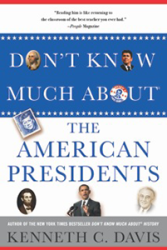
Don’t Know Much About® the American Presidents (Hyperion paperback-April 15, 2014)
The post It is NOT Presidents Day. Or President’s Day. Or Even Presidents’ Day. first appeared on Don't Know Much.
January 28, 2024
In the Shadow of Liberty
As we move toward Black History Month, and teaching an accurate version of American History is under assault, the nation must honestly confront the role that enslavement played in the nation’s founding and development. In the Shadow of Liberty tells that story.
Did you know that many of America’s Founding Fathers—who fought for liberty and justice for all—were slave owners?
Through the powerful stories of five enslaved people who were “owned” by four of our greatest presidents, this book helps set the record straight about the role slavery played in the founding of America. These dramatic narratives explore our country’s great tragedy—that a nation “conceived in liberty” was also born in shackles.
BILLY LEE, who became George Washington’s valet and fought in the American Revolution alongside him.ONA JUDGE, who escaped from Washington’s Philadelphia household—only to be tracked down by the president’s men.ISAAC GRANGER, who survived the devastation of Yorktown before returning to Thomas Jefferson’s Monticello.PAUL JENNINGS, who was present at the burning of James Madison’s White House during the War of 1812.ALFRED JACKSON, who was born into slavery at Andrew Jackson’s Hermitage, survived the Civil War, and lived at the plantation into the 20th century.

The post In the Shadow of Liberty first appeared on Don't Know Much.
January 4, 2024
GREAT SHORT BOOKS: A Year of Reading–Briefly
NOW IN PAPERBACK

GREAT SHORT BOOKS:
A YEAR OF READING — BRIEFLY
Scribner/Simon & Schuster and Simon Audio (Unabridged audio download)
“An exciting guide to all that the world of fiction has to offer in 58 short novels — from ‘The Great Gatsby’ and ‘Lord of the Flies’ to the contemporary fiction of Colson Whitehead and Leïla Slimani — that, ‘like a first date,’ offer pleasure and excitement without commitment.” New York Times Book Review
Booklist “Editors’ Choice Adult Books 2022″
“…The most exceptional of the best books of 2022 reviewed in Booklist…”
“Delightfully accessible, Great Short Books: A Year of Reading–Briefly presents 58 fact-filled reviews of short books, a smorgasbord of titles sure to entice readers.” –Cheryl McKeon, Shelf Awareness
“I consider Davis’ ‘Great Short Books’ a gift to readers, a true treasure trove of literary recommendations.” —Sue Gilmore, SFGate
“Anyone who’s eternally time-strapped will treasure Kenneth C. Davis’ Great Short Books. This nifty volume highlights 58 works of fiction chosen by Davis for their size (small) and impact (enormous). Each brisk read weighs in at around 200 pages but has the oomph of an epic.” —Bookpage Full Review
“An entertaining journey with a fun, knowledgeable guide…. “ Kirkus Reviews
“A must-purchase for public and school libraries.” ALA Booklist
FIRST TRADE REVIEWS FROM KIRKUS, PUBLISHERS WEEKLY, BOOKLIST
“Davis feels that novels of 200 pages or less often don’t get the recognition they deserve, and this delightful book is the remedy…A must-purchase for public and school libraries.” *Starred Booklist review
“An entertaining journey with a fun, knowledgeable guide…. His love of books and reading shines through. From 1759 (Candide) to 2019 (The Nickel Boys), he’s got you covered.” –Kirkus Reviews
Full KIRKUS review here
“Davis’s conversational tone makes him a great guide to these literary aperitifs. This is sure to leave book lovers with something new to add to their lists.” FULL PUBLISHERS WEEKLY REVIEW here
During the lock-down, I swapped doom-scrolling for the insight and inspiration that come from reading great fiction. Inspired by Boccaccio’s “The Decameron” and its brief tales told during a pandemic, I read 58 great short novels –not as an escape but an antidote.
“A short novel is like a great first date. It can be extremely pleasant, even exciting, and memorable. Ideally, you leave wanting more. It can lead to greater possibilities. But there is no long-term commitment.”
–From “Notes of a Common Reader,” the Introduction to Great Short Books
Read “The Antidote to Everything,” an excerpt from the Introduction published on Lit Hub
The result is a compendium that goes from “Candide” to Colson Whitehead, and Edith Wharton to Leïla Slimani. And yes, Maus and many other Banned Books and Writers.

What “A Year of Reading–Briefly” looks like

Voltaire in Great Short Books
Art © Sam Kerr

Edith Wharton in Great Short Books
Art © Sam Kerr
Advance Praise for Great Short Books: A Year of Reading—Briefly
“GREAT SHORT BOOKS is a fascinating, thoughtful, and inspiring guide to a marvelous form of literature: the short novel. You can dip into this book anywhere you like, but I found myself reading it cover-to-cover, delighting in discovering new works while also revisiting many of my favorites. GREAT SHORT BOOKS is itself a great book—for those who are over-scheduled but want to expand their reading and for those who will simply delight in spending time with a passionate fellow reader who on every page reminds us why we need and love to read.”
–Will Schwalbe, New York Times bestselling author of THE END OF YOUR LIFE BOOK CLUB
“This is the book that you didn’t know you really needed. I began digging into this book as soon as I got it, and it was such a delight to read beautiful prose, just a sip at a time, with Kenneth Davis’ notes to give me context and help me more fully appreciate the stories. Keep this book near your bed or on your coffee table. It will be read and loved.”
–Celeste Headlee, journalist and author of WE NEED TO TALK and SPEAKING OF RACE

Recording audio book of Great Short Books (Sept. 2022) Photo by Katherine Cook
From hard-boiled fiction to magical realism, the 18th century to the present day, Great Short Books spans genres, cultures, countries, and time to present a diverse selection of acclaimed and canonical novels—plus a few bestsellers. Like browsing in your favorite bookstore, this eclectic compendium is a fun and practical book for any passionate reader hoping to broaden their collection— or anyone who is looking for an entertaining, effortless reentry into reading.
Listen to a sample of the audio book of Great Short Books

And Indie booksellers weigh in:
“Need something grand, something classic, uh…. something short to read, but don’t know where to start? Check out Kenneth Davis’s guide to Great Short Books and you’ll soon find just the right tale to delight your literary palate. For each suggestion, Davis gives us first lines, a plot summary, an author’s bio, a reason for reading it, and, finally, what you should read next from the author’s canon. Pick up a copy… you’ll be glad you did. You’re welcome!”—Linda Bond, Auntie’s Bookstore (Spokane, WA)
“Kenneth Davis has presented the perfect solution for too many books, not enough time—a collection of exceptional short books perfect for reading in a society seemingly without any free time. Many of the books may be familiar by name, some are obscure, some even forgotten, but all belong in the canon of superb literature. He teases with a brief synopsis and explains why each book deserves attention. An absolutely intriguing bonus is a short biographical sketch of each author, many of whom had fascinating but traumatic lives. It is the perfect book to provide comfort literature for busy readers.”—Bill Cusumano, Square Books (Oxford, Miss.)
More early reviews from readers at NetGalley.com
“GREAT SHORT BOOKS is a wonderful, breezy but deep look at the outstanding short books of the last 150 years. Kenneth C. Davis is a genius at summarizing each book and making the reader want to read said book post haste. This is a book I didn’t know the world needed but the world did.” –Tom O., reviewer
“…an incredibly valuable tool for book clubs and readers everywhere! Some authors/titles are well-known and others will be new discoveries….HIGHLY RECOMMENDED for any book group looking to find new titles or any reader who wants to know what to read next.” –Ann H. reviewer
“I found over a dozen new authors or titles I want to now read that were included in his main list, and the Further Reading at the end of each chapter and at the end of the volume itself.
As others have suggested, this is a great tool for Book Clubs!
Not Lit Crit, it is mostly focused on necessary, just-the-facts-mam information on one person’s reading of short books over a year. Well worth a read, and great for browsing!” –Stephen B., Librarian
“What better way to introduce new readers to more than 50 ‘short’ books. This handy book is full of non-spoiler descriptions and cultural context that situate these stories within our world.” –Kelsey W., librarian
S0urce: Great Short Books via NetGalley
I can’t wait to start talking about this book with readers everywhere.
Teachers, Librarians, Book Clubs and Other Learning Communities:
Invite me for a visit to your school, classroom, library, historical group, book club or conference.
The post GREAT SHORT BOOKS: A Year of Reading–Briefly first appeared on Don't Know Much.
December 5, 2023
Who Started the “War on Christmas?”

“In the interest of labor and morality” (1895: Image Courtesy of Library of Congress Prints and Photographs Division Washington, D.C. 20540 USA http://hdl.loc.gov/loc.pnp/pp.print)
(12.05.2023 revision of a post first published 12.11.2o13. But it never gets old.)
Fortunately, the so-called “War on Christmas” seems to have disappeared this year.
Proclaiming a secular assault on the religious significance of the holiday has been a seasonal tradition, just like the Macy’s Parade with Santa Claus. Claiming that “Happy Holidays” instead of “Merry Christmas” was a betrayal of Christian America a staple of conservative talk show hosts for years and part of America’s political culture wars.
The basic premise: Christmas is under attack by Grinchy atheists and secular humanists who want to remove any vestige of Christianity from the public space. Any criticism of public displays devoted to religious symbols –mangers, crosses, stars — was seen by these folks as part of a wider attack on “Christian values” in America. Mass market retailers who substituted “Happy Holidays” for “Merry Christmas” were part of the conspiracy to “ruin Christmas.”
But in fact, most religious displays are not banned in America. Courts simply direct that one religion cannot be favored over another under the Constitutional protections of the First Amendment. Christmas displays are generally permitted as long as menorahs, Kwanzaa displays, and other seasonal symbols are also allowed.
In other words, the “War on Christmas” is pretty much a phony war. But where did this all start?
The first laws against Christmas celebrations and festivities in America came during the 1600s –from the same wonderful folks who brought you the Salem Witch Trials — the Puritans. (By the way, H.L. Mencken once defined Puritanism as the fear that “somewhere someone may be happy.”)
“For preventing disorders, arising in several places within this jurisdiction by reason of some still observing such festivals as were superstitiously kept in other communities, to the great dishonor of God and offense of others: it is therefore ordered by this court and the authority thereof that whosoever shall be found observing any such day as Christmas or the like, either by forbearing of labor, feasting, or any other way, upon any such account as aforesaid, every such person so offending shall pay for every such offence five shilling as a fine to the county.”
–From the records of the General Court,
Massachusetts Bay Colony
May 11, 1659
The Founding Fathers of the Massachusetts Bay Colony were not a festive bunch. To them, Christmas was a debauched, wasteful festival that threatened their core religious beliefs. They understood that most of the trappings of Christmas –like holly and mistletoe– were vestiges of ancient pagan rituals. More importantly, they thought Christmas — the mass of Christ– was too “popish,” by which they meant Roman Catholic. These are the people who banned Catholic priests from Boston under penalty of death.
This sensibility actually began over the way in which Christmas was celebrated in England. Oliver Cromwell, a strict Puritan who took over England in 1645, believed it was his mission to cleanse the country of the sort of seasonal moral decay that Protestant writer Philip Stubbes described in the 1500s:
‘More mischief is that time committed than in all the year besides … What dicing and carding, what eating and drinking, what banqueting and feasting is then used … to the great dishonour of God and the impoverishing of the realm.’
In 1643, Parliament banned Christmas celebrations.
“The Puritans sought to turn Christmas into a fast day, with an act of Parliament in 1643 declaring that it should be observed ‘with the more solemn humiliation because it may call to remembrance our sins, and the sins of our forefathers who have turned this Feast, pretending the memory of Christ, into an extreme forgetfulness of him, by giving liberty to carnal and sensual delights.’ Two years later, the Directory of Public Worship was unequivocal that feasts such as Christmas had no warrant in scripture.”
–Bruce Gordon, “The Grinch That Didn’t Steal Christmas”
Attending mass was forbidden. Under Cromwell’s Commonwealth, mince pies, holly and other popular customs fell victim to the Puritan mission to remove all merrymaking during the Christmas period. To Puritans, the celebration of the Lord’s birth should be day of fasting and prayer.
In England, the Puritan War on Christmas lasted until 1660. In Massachusetts, the ban remained in place until 1687.
So if the conservative broadcasters and religious folk really want a traditional, American Christian Christmas, the solution is simple — don’t have any fun.
Read my article on religion in America, “America’s True History of Religious Tolerance” (Smithsonian)
And read more about the Puritans in Don’t Know Much About® History and America’s Hidden History. The history behind Christmas is also told in Don’t Know Much About® The Bible.

America’s Hidden History, includes tales of “Forgotten Founders”
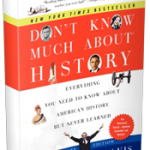
Don’t Know Much About History (Revised, Expanded and Updated Edition)
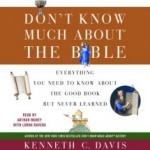
The post Who Started the “War on Christmas?” first appeared on Don't Know Much.



